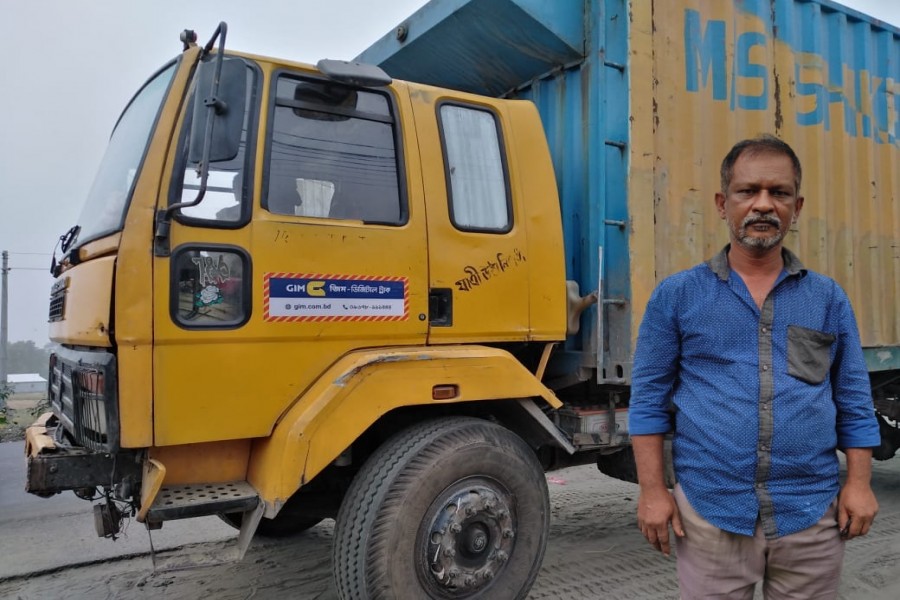‘Shomogro Bangladesh 5 ton’ - We all have seen that inscribed in the back of trucks on roads and highways that travel many kilometers.
Truckers are responsible for vehicles that often weigh over 11,000 kgs and often lose sleep to meet strict delivery deadlines. But that is just the tip of the iceberg; the intangible load that comes with the profession is much heavier.
If you follow along with a truck driver, you’ll quickly learn that most of them like to get an early start. You can expect to get up and get on the road anywhere between 3 am and 5 am, although the actual time will depend on the specific driver and the requirements of the job.
Once on the road, truck drivers are often held to a tight schedule. This means that truck drivers must stay constantly alert for potential delays, such as slow vehicles or accidents.
Some things, such as dangerous weather and equipment failure, are outside of the driver’s control. Still, there is an expectation that the delivery will be made according to schedule, so truck drivers must make every effort to get their shipments to their destination on time.
Truck drivers in rural areas with little or no connectivity at all, have it worse.
But digitisation in the logistics sector has been empowering and enabling them to overcome their hurdles.
Kamal Hossain, a resident of Shariatpur and a truck driver by profession, shares his story of empowerment leveraging technology and digitization.
‘We have been living in this village for nearly two decades. Our ancestors were fishermen but with water bodies drying out, we had to shift to a different form of livelihood. I used to work as a ‘helper’ for a truck driver who was kind enough to teach me how to operate the automobile. Since then, driving trucks has been the main source of income for my household.
Sometimes I had to travel 4-5 days in a row, staying away from my family missing out on my children growing up; sometimes even that compromise did not keep us from going hungry.
Since I did not have the luxury of experiencing a father, I had always hoped for that being different for my kids.
But I did not have many options to choose from in the first place because of the lack of availability of trips in such rural areas, I had to make the most out of whatever I got. After all, beggars cannot be choosers. I always consoled myself with the fact that at least I was putting food on the table even though I was missing out on my children growing up.
Fortunately, it has changed for the better now.
Around one and a half year ago, I was introduced to Goods in Motion (GIM) and now I have the option to choose from suitable trips. I have been getting continuous trip options which give me the opportunity to plan my schedule according to the route and still be a part of my children’s lives.
I have made 142 trips with GIM so far, and with the increased number of trips added to my revenue, I have been able to offer reasonable rates for customers as well.
My family do not have to stay hungry anymore nor do they have to miss out on their father.”
GIM is a digitalised logistic platform that has already set its footprint in 61 districts, has been facilitating thousands of trips every month for a wide range of customers; from development projects to giant corporates like Lafarge, Shah Cement, Seven Rings Cement, Royal Cement, BEOL, ACI, Runner, Abul Khair among others.
More importantly, it has been helping people like Kamal Hossain to live by their own terms by leveraging technology.
The contributor is a freelance writer, [email protected]


